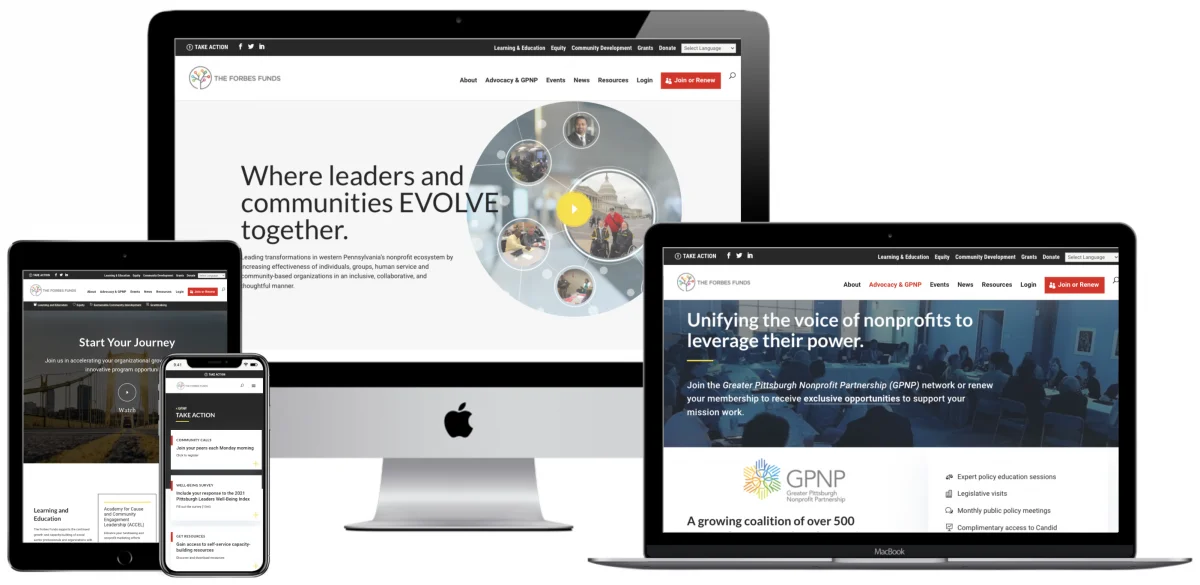Some technological advances are rapid and others are slower to take shape. Imagine even fifty years ago that the job title of ‘web designer’ would have been baffling, especially twenty-one years before the world wide web was invented. Even twenty-one years later, a ‘website designer’ wasn’t a job role either. It wasn’t until the early 2000s that design, typography, graphics, and the need for ‘dynamic’ websites took off. It’s a relatively short history, but look how ubiquitous it is now. Even still, web design is further complicated by the need not only for good ‘design’ but for understanding voice search, SEO, backlinks, schema, and much, much more.
Where did the jobs go?
In another fifty years, technology may not have advanced enough for robots to take over our jobs but job titles and functions will change and many careers that our potential grandchildren will embark on will not be invented for another five, ten, twenty, or more years from now. It’s a sobering yet exciting thought.
A switchboard operator may not have thought his or her job would be obsolete by now any more than someone who worked at Blockbuster video in the 1990s would have imagined DVDs then streaming would take over the media world or that YouTube would change the face of viewing.
We’ve moved from a society of skilled tradesmen and women to a more digital era already where many of us go to our figurative 9-5 and sit behind a screen all day, completing tasks that would have been unfathomable to those generations past. In changing our world of work, some skills and societal norms are lost, certainly, but others are gained. Many who labored on the farm or in the factory undertook backbreaking work for barely liveable wages; however, those skilled carpenters like the work of Thomas Chippendale or the architecture of Robert Adam may not be able to be recreated with such skill and dexterity no matter how many machines take over human precision work.
What happens when work becomes obsolete?
There’s always a backlash when jobs become obsolete, especially as a result of technological advancement. You only have to look to the Luddite movement of the 19th century to realize that handweavers felt that mechanized looms would render their labor unnecessary and, faced with starvation in a harsh factory-based cotton-mill society, they revolted. (It didn’t exactly get them anywhere, but that’s another story.) Yet imagine for a moment that these factory workers were upskilled, retrained, and reassured that even though those jobs wouldn’t be available, some other type of work would be.
What will the future of work look like?
What does the future of work look like and how can businesses prepare their workers to face it? Will it be a world of mass unemployment with the need for universal basic income or will the future look a little brighter with some effort now to prepare people for what’s to come?
Let’s take a look at some ideas companies need to address.
Preparing for an ageing workforce
In the 1980s, the term ‘Silver Tsunami’ was coined to describe an ageing workforce. Currently, there are concerns regarding the ‘Baby Boomer Retirement Crisis’ which posits that as those born between 1946 and 1964 retire, we will have a ‘talent crisis’ or not enough skilled workers to replace this retiring generation. (Other articles focus on the fact that Baby Boomers are less prepared financially to retire than previous generations, but we will focus on the first point.) Some argue that the millennial generation may not have the entry-level skills to replace these workers, especially those on the younger end of the scale who do not have college degrees.
Companies need to prepare either by training entry-level employees and investing in them more or embracing remote employees who have the desired skills already, especially in areas with skills shortages (more on this idea later).
Another issue facing a decline in working-age population is that when there’s a shortage of qualified workers, businesses find it difficult to fill roles, which means higher labor costs, lower productivity, less opportunities for business expansion, the chance for international markets to take over, causing crisis for companies who employ hundreds or thousands. Further, a shortage of skilled workers can cause those wages for in-demand workers to skyrocket, which can cause inflation.
One way to combat this issue–as many countries such as Australia, Canda, and the United Kingdom have done–is to attract and employ highly-skilled immigrants and integrating them into the workforce.
One thing is certain is that companies have to think of new ways to retain, attract, and train talent no matter where they source it.
A need for reskilling and upskilling
Some companies feel they are preparing for the future of work by reducing costs and becoming more ‘efficient,’ but thinking along the same lines and making current work practices more efficient will have little effect on a future that will change rapidly.
Consider the transportation industry alone. By 2040 it’s estimated that three-quarters of all cars on the road will be replaced with ‘autonomous’ driverless cars. If we don’t need ubers, taxis, buses, trains, trams, and other forms of transport and we mostly use driverless cars, how many people will be out of work? And what is this industry doing to prepare these workers for a career change a mere twenty years from now?
Also, think about the changes the retail industry has faced in recent years with the fall of the mom and pop business and the rise of online retailers. As online stores like Amazon take over, the traditional retail environment has changed (and sometimes been eliminated). Fewer people leave their homes to shop for items they need, which means that many smaller businesses are sinking under pressure.
Of course, for smaller business, this issue is a problem, especially in small towns were local economies rely on money being pumped into local businesses to keep them afloat. But, if these small companies cannot remain competitive, are they viable long-term? It’s certainly challenging and sorrowful for local communities when these businesses fail but all businesses strive to remain competitive and keep ahead of the curve despite the challenging market. After all, a small town of a few thousand might only need two hairdressers, not twenty so, no matter how many skilled hairdressers the town has, some of them will need to retrain in other industries to be necessary for that workforce.
Prior to upskilling, many university students and lower-skilled workers often take retail and service industry jobs as a start to their career (in the past, that may have been factory work) but will that change? Even fast food chains like McDonald’s have reduced staff (and the need to pay fair wages) with the advent of touch-screen ordering systems. Will the next steps be robots frying the fries? How many human workers will be needed to help inventory stock and ensure that the robots are performing correctly? What kind of skills will these workers need to have?
And that leads to a further question. Is it an individual’s job to re-skill themselves when they have no idea which skills they will need in the future or is it a company’s job to help you prepare?
In an ‘anyone can be replaced’ culture, it’s best to ensure you’re indispensable to a company’s efforts, becoming the person who people go to when they want vital tasks to get done. In this modern era too, personality becomes a key factor. It’s not just the skills you have but how you fit in with a team and also what creative thinking you bring to the table, how you stand out.
It’s estimated that as technology advances 47% of the population will be unemployed. That’s a worrying thought, especially since for those in their 20s and 30s, companies offer little in the way of pension contributions and may face a retirement age well beyond the age of sixty.
Investing in people
You can search through many recent job advertisements that ask for an astronomical list of skills often at shockingly low wages for those skills. What is the most valuable skill that a potential employee has acquired? One may say critical thinking. Often times, that laundry list of skills can be taught, but thinking and being able to process, synthesize, collate, and use information as well as use one’s initiative often cannot be taught. Sure, that takes an investment in training and upskilling that employee, but in return, you might gain a loyal employee who values his or her employer. Why do young people change jobs so often? Because they feel they are replaceable, underpaid, undervalued, and underinvested in. No one ever leaves a job because they are overpaid and over-appreciated.
Leah Bury, our former Coding For Causes program management consultant, wrote a thought-provoking piece called ‘The Deceit of Startup Culture’ that discusses how companies, especially startups, are more loyal to their shareholders than their employees, offering them little in the way of benefits in exchange for a ‘fun-filled workplace culture.’ Leah notes that the dark underbelly is that these young, underpaid employees do not realise that despite the fact they may get to play pool, have free snacks and drinks, they get very little benefit from companies that hire and fire at will and are beholden to shareholders and see employees as replaceable capital.
It doesn’t seem like companies are changing their game anytime soon. In fact, Forbes estimates in under ten years around 50% of the population will be freelance. This may mean that companies may not have to pay expensive benefits, but they may have to pay a premium for bespoke services.
However, for the other forty-five percent or so of the workforce (accounting for a necessary percentage of unemployment), it’s important that companies do think of investing in employees more–similar to older models of employment–by offering training, benefits, holidays, healthcare, and so forth since replacing employees is expensive. Some argue the cost per hire is around $3,000-4,000, others argue that it’s about 20-30% of the first year salary, and yet others argue that it may cost double the first year salary.
Investing in people and preparing people for the workforce is also the job of schools and universities. It has already been established that skills such as finance, investing, computer skills, writing, and a multitude of other skills need to be taught in schools to prepare students for the ‘real world’ in more tangible and better ways than has been done in the past. Plus, instead of universities churning people out, degree-in-hand without worrying about where they go next, needs to change. The need for valuable and meaningful work placements, apprenticeships, paid internships, and the like can give students more opportunities to be the kind of workers companies want in the future. Realistic mentors and coaches who can help students discover their passions and their talents will help too.
Embracing working from home
Many companies no longer require an office, which allows workers to have flexibility, autonomy, and gain valuable hours of their life they would have spent in heavy commuter traffic. Fewer offices running means saving on water, electricity, fuel, and more–and is an added benefit and plus point for people whose benefits are increasingly stripped from them. On the flipside, remote work may also mean restaurants lose out on the lunch rush, which will change our city and town centres even more. That point aside, the future will see remote work become increasingly more popular. Over 5% of the US population worked from home last year alone and the figure continues to rise. How will ‘work’ and the idea of ‘work’ change when the workday is flexible? Will it help improve our lives or will it present companies with further challenges?
Interestingly, publications like Forbes, Inc (which cites a Stanford study), Tech Republic, and others overwhelming demonstrate that remote workers are more productive workers, especially when given the option to work from home a few days a week minimum.
However, to succeed companies and employees will need the skills to communicate remotely using new communication-based technologies and resources (think Trello, Slack, Asana, Monday.com, Basecamp, Skype, Google Hangouts, Google Docs, Microsoft Teams, other cloud-based systems, and so forth). Management structure will also have to change as managing remote employees differs from managing face-to-face ones.
The takeaways
Whereas we don’t have all the answers, it’s worth considering potential solutions to the problems faced with the future of work. How will your company embrace upcoming changes? How will you ensure you have the workforce trained and upskilled to face challenges as your industry evolves? Let us know on Twitter with the hashtag #FutureWorksPHL and tag @KeyMedium.

Elaine Frieman holds a Master’s Degree and is a UK-based professional editor, educational writer, and former marketing agency content writer where she wrote articles for disparate clients using SEO best practice. She enjoys reading, writing, walking in the countryside, traveling, spending time with other people’s cats, and going for afternoon tea.

Ali Jaffar has been building dazzling websites and creating amazing online experiences for over a decade. His mastery of the latest innovations in web development results in world-class website experiences set apart by show-stopping style and seamless functionality. A sought-after consultant and 50-time award-winning storyteller, UX expert, and web developer — Ali lends his talents to build and bolster digital experiences for a wide array of clients — with a keen focus on web design for nonprofit organizations, B2B, and government agencies. When Ali’s not helping his clients grow, you can find him cooking, exploring new places with his dog, or experimenting with AI & new gadgets.
Connect with Ali on LinkedIn to continue the conversation.

